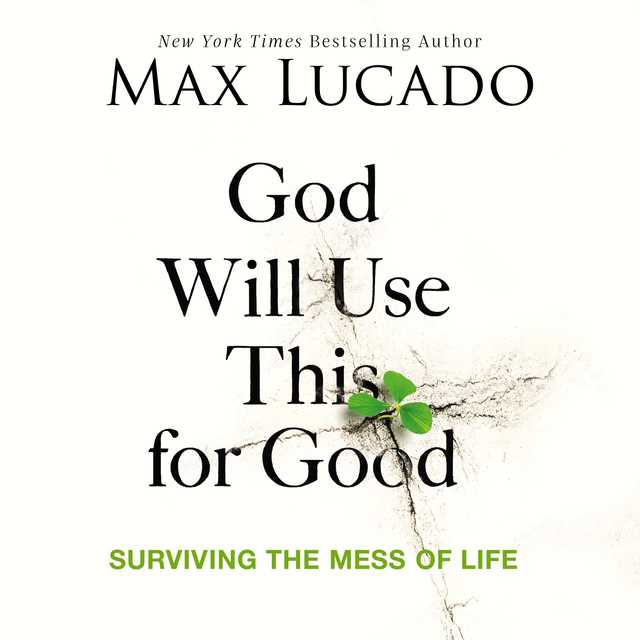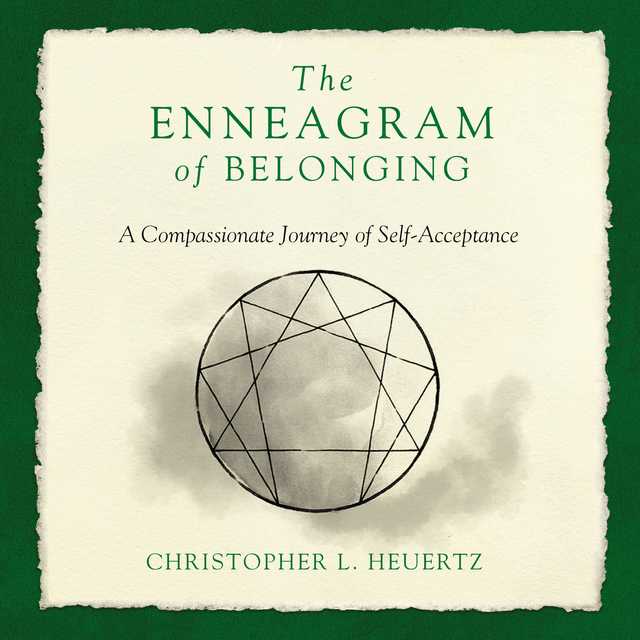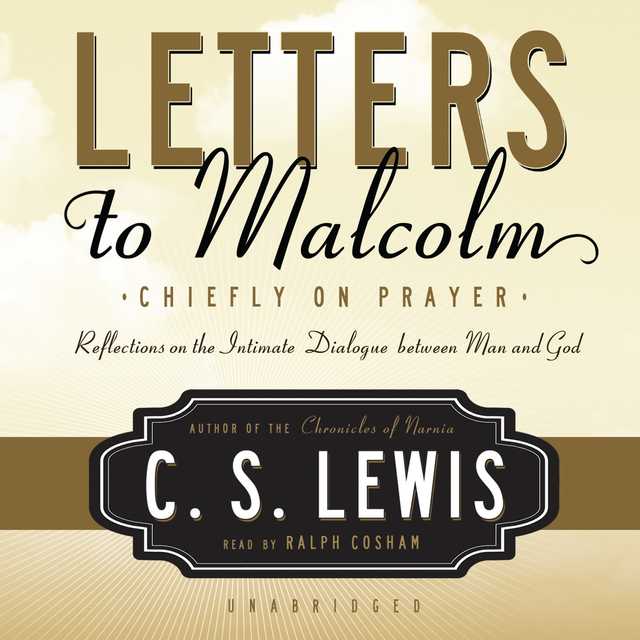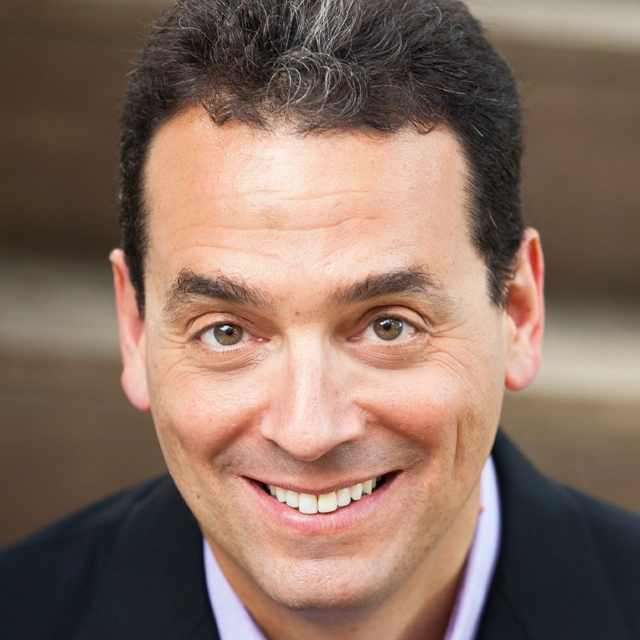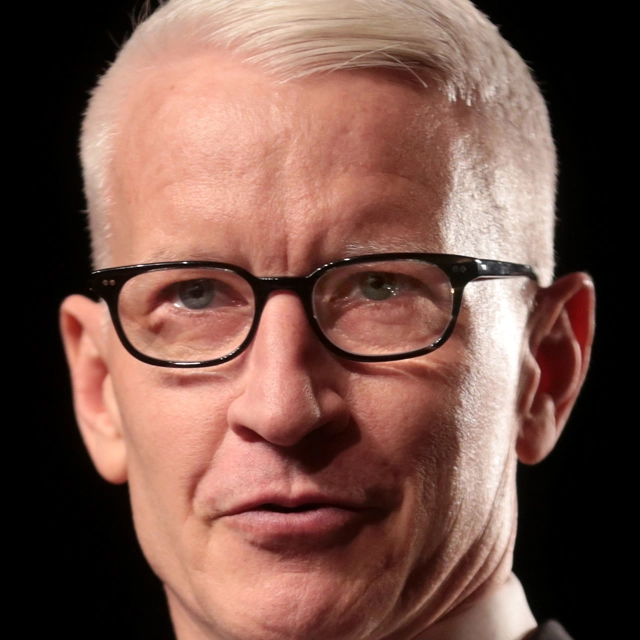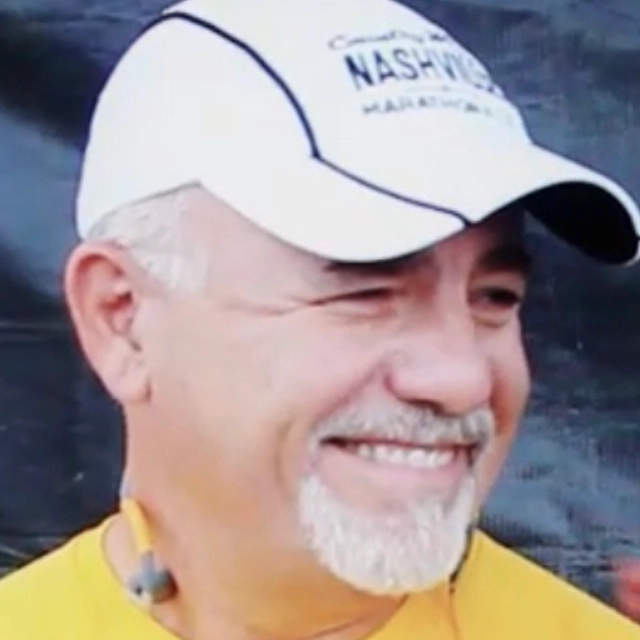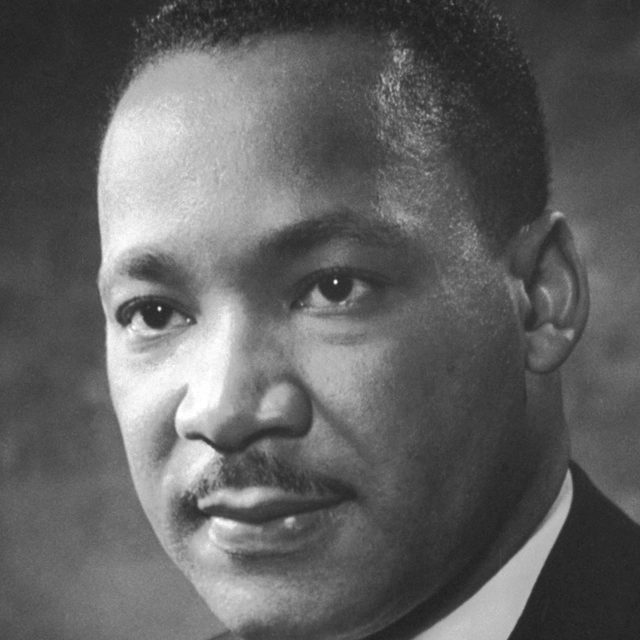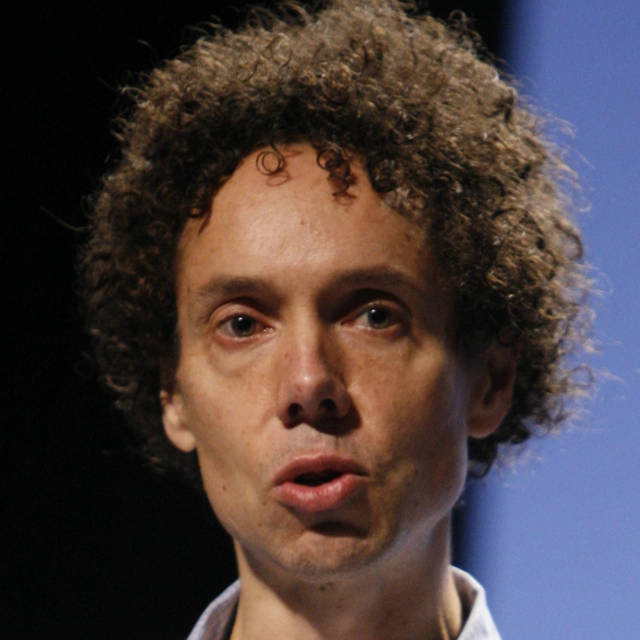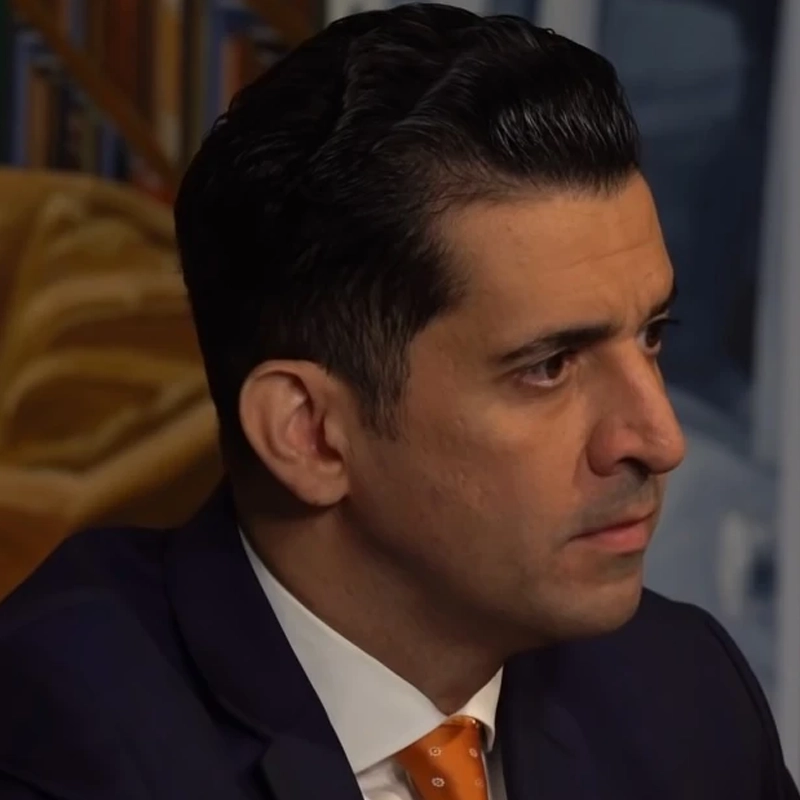Recommended by 1 experts
Gang Leader for a Day Audiobook Summary
The story of the young sociologist who studied a Chicago crack-dealing gang from the inside captured the world’s attention when it was first described in Freakonomics. Gang Leader for a Day is the fascinating full story of how Sudhir Venkatesh managed to gain entree into the gang, what he learned, and how his method revolutionized the academic establishment.
When Venkatesh walked into an abandoned building in one of Chicago’s most notorious housing projects, he was looking for people to take a multiple-choice survey on urban poverty. A first-year grad student, he would befriend a gang leader named JT and spend the better part of the next decade inside the projects under JT’s protection, documenting what he saw there.
Over the next seven years, Venkatesh observed JT and the rest of the gang as they operated their crack selling business, conducted PR within their community, and rose up or fell within the ranks of the gang’s complex organizational structure.
Gang Leader for a Day is an inside view into the morally ambiguous, highly intricate, often corrupt struggle to survive in an urban war zone. It is also the story of a complicated friendship between two young and ambitious men, a universe apart.
Other Top Audiobooks
Gang Leader for a Day Audiobook Narrator
Reg Rogers is the narrator of Gang Leader for a Day audiobook that was written by Sudhir Venkatesh
Sudhir Venkatesh is professor of sociology at Columbia University. He has written extensively about American poverty. He is currently working on a project comparing the urban poor in France and the United states. His writings, stories, and documentaries have appeared in The American Prospect, This American Life, the Source, and on PBS and national Public Radio.
About the Author(s) of Gang Leader for a Day
Sudhir Venkatesh is the author of Gang Leader for a Day
More From the Same
- Author : Sudhir Venkatesh
- The Tomorrow Game
- Floating City
- Publisher : HarperAudio
- Abraham
- American Gods [TV Tie-In]
- Dead Ringer
- House of Sand and Fog
- Prey
Gang Leader for a Day Full Details
| Narrator | Reg Rogers |
| Length | 8 hours 44 minutes |
| Author | Sudhir Venkatesh |
| Category | |
| Publisher | HarperAudio |
| Release date | January 10, 2008 |
| ISBN | 9780061629235 |
Subjects
The publisher of the Gang Leader for a Day is HarperAudio. includes the following subjects: The BISAC Subject Code is Social Science, Sociology, Urban
Additional info
The publisher of the Gang Leader for a Day is HarperAudio. The imprint is HarperAudio. It is supplied by HarperAudio. The ISBN-13 is 9780061629235.
Global Availability
This book is only available in the United States.
Gang Leader for a Day is recommended by
Mark Zuckerberg
Mark Zuckerberg is a business magnate & philanthropist.
Explores what life is like for those who don't live under effective governance.
Goodreads Reviews
Kressel
June 22, 2017
If you’ve read Freakonomics, then you’ve already been introduced to this amazing story. As a grad student in sociology, Sudhir Venkatesh naively walked into a Chicago public housing project with the aim of researching urban poverty. Armed with a survey, he proceeded to interview the first people he saw, who just happened to be young, crack-dealing gang members. Because he is a dark-skinned ethnic Indian, neither white nor African American, the gang members assumed he was a Mexican from a rival gang sent out to spy on them. They held him hostage in a stairwell for hours, interrogating him about what he knew about the rival gang, which, of course, was nothing. He kept insisting, truthfully, that he was a grad student who had come to do research. Eventually, their leader, J.T., showed up, and not only did he believe Sudhir, he liked the idea of having a publicist around, so he let him hang out with the gang for the next seven years. Probably no sociologist before or since has enjoyed such access to the underworld, and the result is this book as well as the body of academic work that has made Professor Venkatesh’s career.Fortunately, the tone of the book is anything but academic. It is written in the first person narrative and is as much about Sudhir’s growth as it is life in the projects, so it reads like a novel, complete with peppery dialogue, suspenseful action, and a good dose of self-doubt from the protagonist/author. The contrast between naïve, educated Sudhir and streetwise J.T. and Ms. Bailey, matriarch of the building, illustrates the class divide in this country like nothing I’ve ever read. Sudhir, having grown up middle class, is appalled by the level of neglect in the projects. The Chicago Housing Authority (CHA) doesn’t do basic repairs, and police and emergency medical services can’t be relied on to show up when called. Ms. Bailey is one of the leaders who steps in to fill in the gap, organizing food and clothing drives and advocating for the tenants when she can, but she’s not all charity. Sometimes they have to pay her a little something for her time and effort. J.T. presents similar moral contradictions. He portrays himself as a community activist, and shockingly, there’s some truth to his claim. Since a police presence would be bad for his business, he uses his underlings as a sort of police force to control petty crimes in the building. He can also be generous with his wealth, which he shares with Ms. Bailey toward her efforts. It may be dirty money, but Ms. Bailey will do whatever it takes to help people survive.The book affected me more strongly than any book I’ve read in a while. I’ve been to Professor Venkatesh’s website, listened to all his interviews and his presentation on public housing. Perhaps one of these days, I’ll write him a personal letter. He’s everything I wish I could be: an academic whose work has actually done something to solve society’s problems. The book doesn’t shy away from anyone’s faults, including his own, but ultimately, by showing the good side of people, particularly the creative ways the tenants pool resources, he conveys a beautiful, humanitarian message.
Anna
March 27, 2008
Gang Leader for a Day is hands down one of the best books I have ever read. Sudhir Venkatesh, whose research on gangs was first made famous in Freakonomics, wrote this memoir of how he came to become an active observer of the drug trade in Chicago's Robert Taylor Homes (infamous public housing project) in late 1980s/early 1990s. Although it's nonfiction, the book reads like a narrative and it's incredibly engaging and page-turning suspenseful. Knowing that the events are real actually builds more suspense and curiosity because although I know what happens with the Robert Taylor Homes (they eventually get torn down), I am dying to know what happens to the characters in the book. Venkatesh's writing takes on a style that I can only compare to that of the HBO show "The Wire." His characters are neither "good" nor "bad," but always something in between, and nothing is really truly black or white. But they are genuine and they all have stories that often go untold. This book focuses on the "gray area" of society as a whole. He asks questions about issues that matter -- what public policies can and should be put into place to help poor African-Americans? How come our public housing system is so screwed up? What is the role of the police and who do they really serve and protect? Who has power/control and what do they use it for? One of the greatest things that this book taught me is that it's not really an "us against them" problem, no matter how much we may want to think it is. Simplifying it like that makes it easier to digest the fact that modern urban crime is a tough (impossible?) problem to solve, but it's naive to try to act like there are simple solutions. I'm not sure we'll ever see a solution to things like drugs and gangs and bribery and violence. I think that what I took away from this book is that this whole issue of how to "help" people in the projects is way more complicated than we can possibly ever imagine it to be. But if we ever hope to come closer to solving it, understanding how it works (and this book does a great job of explaining) is probably pretty important.
Maciej
May 07, 2019
Sudhir Venkatesh tells you a true story of him going into the ghetto where he tries to fill a survey in Chicago gangs given to him by his University. When he went into Chicago’s ghetto buildings and tried to interview some gang members about their interactions and day-to-day dealings within the crack industry he found out (surprisingly) that the people who live there don’t welcome stranger very kindly. During his first meeting he was held hostage for 24 hours without any harm but people were very unsure about his presence and didn’t know what to expect. Worth to say that he didn’t fit into the ethnical environment as he is an Indian.Anyway, they held him for 24 hours till they could get the word that he was okay. Eventually, he went back to the same apartment buildings again and again until he established a relationship with the people who lived there and he learned a lot of things about living in the ghettos. It was really striking how the book reveals realities about life in very poor tenement buildings in which they have micro-economies and other small jobs such as cutting hair or fixing cars.The major story is about how Sudhir Venkatesh was literally invited to play the role of the Chicago gang leader for a day when he had to make some decisions on behalf of the gang that lived in. Apparently, an easy role focused on goods, crack and money management. Eventually, it emerged that it’s more about micromanagement and hard decision about life and death of the other gang “family” members, competitors and other unrelated people.In conclusion, the book offers an opportunity to see deep inside a Chicago gangs and the world in which the members live, as well as people outside the gang that interact with them. The book depicts the harsh gang reality full of brutality, poverty but also everyday aid... (if you like to read my full review please visit my blog: https://leadersarereaders.blog/gang-l...)
Alex
March 21, 2008
This is a book that I’m glad I heard about first on the radio, because it is not represented well by its title or cover. The Sudhir Venkatesh on the book jacket, in his vintage leather coat with the collar up, arms folded in tough guy stance in front of derelict seeming housing projects slightly out of focus in the back ground, seems like a wannabe bad ass. And that’s not at all the impression you get from the memoir inside the book.And the title—“Gang Leader for a Day”—makes it sound like you’re going to get a sensational fantasy trip into a criminal netherworld, like playing the Godfather on your Playstation. (Which is a good time in its own right.) But in fact, you get an interesting look into a world that exists in every major city in America, that we use as an avatar for all kinds of social ills, but that few people on the outside really go to lengths to understand.In a way, the book recalls Mountains Beyond Mountains, I had a brief infatuation with the idea of studying medical anthropology.) If you’ve ever worked in a job or been in a situation where you have to try and quickly ingratiate yourself with people who are not like you, you’ll identify with Venkatesh. Showing up with a clipboard and ponytail and interrupting a drug deal to ask what it feels like to be black and poor is hardly a show of bravado, but his earnestness, sincerity, and willingness to connect is palpable. Though he has published more scholarly works based on this field work (and clearly done well in the academy as a result) this book shows that he also recognizes the power and impetus of recording life in stories, not just statistics. It’s what brings humanity to his research subjects, and levels the playing field, both for Venkatesh (who comes to recognize himself as a hustler like most everyone else in Robert Taylor) to the rest of us who get not just a voyeuristic thrill out of his accounts, but a chance to drop the stereotypes and see the real human complexity of his subjects.
Melissa
October 19, 2018
As a recent Chicago resident, I found this book fascinating (and a pretty horrifying at times). It made me feel more compassion towards those impacted by violence that happens in the city and more aware of the complexities of helping impoverished communities. Heads up- there is an obscene amount of profanity in conversations Venkatesh recounts.
Rick
July 14, 2022
I really liked this.Sometimes there’s a sort of vulnerability in liking things. It seems easier to be cynical and to point out flaws and something than to say “hey this is cool.” Because as soon as you say you like something, there’s a sense of ownership for it. Other peoples criticisms become criticisms of you in a proxy due to your liking of this thing. I think it’s sort of a byproduct of the hyper online Internet world. Putting yourself out there as supporting something kind of unintentionally, maybe intentionally, is saying that “this thing I like is part of my world. “I usually find it easier to write a criticism of something that is to write a positive review. Some most impactful books probably are that way due to a sense of luck, being the right type of story at the right time in my life where I was receptive to it. I reread old man and the sea, a book I absolutely adored as an 18-year-old and thought it was pretty meh last year. Anyways it’s a really roundabout way to say I like this book, I really respect the author for putting himself firmly inside of the communities he was studying. Ignoring the huge glaring problem of methodology as this is entirely partial research filtered through one person. But I don’t really care. The narrative arc here and the personal stories shared, end up having more impact than I think any sort of statistic that could possibly be statistic-ized. All around, fantastic nonfiction book.
Jamie
May 17, 2009
After Lee Anne recommended this to me, I then uncovered his "what do real thugs think about the Wire" on the Freakonomics blog. So I finally read it. I can safely say I would have read it in 1 sitting if I hadn't taken breaks to watch the Euro. It is THAT good and currently sitting as my favorite book of the year. It's a fascinating peak into "real people" in the Robert Taylor housing projects, and it would be depressing (so many instances in which people accept such horrible injustice as just their fate) but it is mostly simply fascinating. I think Venkatesh really DID capture information that public policy makers could use to aid in urban poverty, but lets be honest, everyone is in on the scams. And they're pervasive. This formed a nice contrast between A Hope in the Unseen, which I'd recently read. That book takes a kid from the inner city and follows him on a journey to Brown. Unfortunately, I found most of this book dry and dull, while Gang Leader for a day crackled with energy.Nonfiction booklist.
Armen
January 16, 2018
I think since 2008 it has been said thousands times that this a must read for anyone who is conducting research in social science, but let me add my voice to those folks and say read and enjoy this eye-opening and mind-altering book.
Maggie
May 07, 2016
Sudhir Venkatesh was a Ph.D. student at the University of Chicago, studying urban poverty. In an effort to interview those living in urban destitution, he grabbed a multiple-choice survey, and headed over to the Robert Taylor Homes - one of Chicago's most notorious housing projects.After a tense introduction, Venkatesh befriended JT, a leader of Chicago's Black Kings gang. This book is Venkatesh's account of the decade he spent observing gang life in the projects. He followed JT around Robert Taylor Homes, witnessing crack-making and selling, prostitution, and an overabundance of violence -- both gang related, and not. He witnessed life in public housing for those who partnered with the gang, and for those who tried to avoid the gang at all costs.The subject matter of this book is one that has always intrigued me - in high school, I read a book called There Are No Children Here (also set in Chicago), which highlighted the lives of children growing up in a blighted and failing housing system. I chose the college I did because I had originally planned to major in Urban Studies and Sociology (I majored in English). Though I didn't study urban plight as I had originally planned, my interest in the subject hasn't waned, and I anticipated loving this book. I didn't. But, I did enjoy it, it was a quick read, and I learned much about the decay of our urban settings.The main issue that I had with this book, is that Venkatesh struck me as painfully naive. He walked into a housing project with a multiple choice survey that asked questions like, "How does it feel to be black and poor?" and actually expected people to respond. What were they supposed to say? "Oh, I love being black and poor. It doesn't bother me at all that I'm a marginalized person, living in a dilapidated building."? Come now.I don't feel like one needs a Mensa caliber brain to realize that these questions are silly and insulting. And yet, Venkatesh was Ph.D. level student at a renowned institution. It just reminded me never to take my common sense for granted.This event took place in the first chapter -- and I didn't really feel that his naivety improved. Venkatesh spent the better part of a decade observing these people, interviewing them, getting to know them, and earning their trust, but, I never felt that he truly understood them. And in fairness, maybe that understanding was never a true possibility.At one point, he broke away from JT for a few days, and interviewed some of the others living in the building. He asked them questions about their "jobs," and their abilities to make a living in this setting. They answered his questions honestly, telling him of the various underground money-making projects that they participated in. Venkatesh knew that JT and his gang "taxed" all the residents who used the building as a place to make money -- and JT was apparently unaware of many of these schemes. Yet, Venkatesh still told JT about these different projects, and then was genuinely surprised when the tenants were angry at him for running his mouth. I wanted to scream at him, "You're a damn fool Sudhir, come on!"During his tenure with the gang, Venkatesh learned so much about how the gang worked and operated, and saw that the gang functioned with the gusto of a Fortune 500 company. JT was the leader of his faction; he had an accountant and a planner. He had worker-bee foot soldiers who stood on the street and sold the product (crack), and he had a whole variety of customers. But, above JT, there was an entire upper-level hierarchy to strive for. The Black Kings were a nationwide gang, and they held leadership meetings all over the country. Venkatesh was fascinated by this -- and so was I.It's not a surprise that the Black Kings cropped up in these buildings. The Robert Taylor Homes were deplorably set-up -- they stretched from 39th Street to 54th, running alongside the Dan Ryan Expressway. In other words, in order for the tenants to LEAVE their housing, they had to literally cross the highway. Many of them did not have cars. They were effectively isolated from the rest of society. The buildings themselves were high rises of 16 stories each - with outdoor hallways. Outdoor. Like a motel. In Chicago.If you haven't been to Chicago -- I'll paint this picture for you: in the winter, Lake Michigan, a huge lake, freezes over. Solid. I've had the wind in Chicago rip at my face so severely that my eyes streamed like I was sobbing, with those tears then literally freezing to my face the second they left my eyes and hit the air. It's cold. It's so. frigging. cold. And, their hallways were outside.After children began plummeting to their deaths from the upper floors, the Chicago Housing Authority (CHA) begrudgingly put chain-link fences up along the corridors. So, these people lived in buildings, with outdoor hallways, enclosed by the beauty of chain-link metal.Outdoor hallways aside - the CHA built these buildings, crammed the people inside, and then left, never to come back or administer the required up-keep. Doors fell off the hinges. Water stopped running in many apartments. The elevators sometimes just, went into a free-fall, killing everyone inside -- and this was only if they were working at all. Appeals to the CHA for help went unanswered. It's not surprising that impoverished people, in run-down buildings, with little access to the city, began organizing themselves into street-gangs.But, with all of this said, can gang members be absolved of their multiple misdeeds? I don't personally believe so, and Venkatesh struggled with this also. I don't think he wanted to absolve them; it was clear that he understood that gang-life wasn't a sustainable lifestyle. Gang members weren't long for this world, and unfortunately, neither were the innocents that they came in contact with. The members of this particular gang often said, "You need to understand that the Black Kings are not a gang; we are a community organization, responding to people's needs," and Venkatesh admitted his skepticism about this many times.The gang felt that it provided its tenants "safety," and "employment." They also conducted "community outreach," by going door-to-door and encouraging people to register to vote (once they were signed up, the gang told them who they were to vote for. The Chicago political machine is alive and well, even in the 'hood).The gang may have provided "protection" to the tenants of their building, but they were also targets of drive-by shootings --in which innocents were killed. The gang may have employed people, paying them money to sell drugs -- but in this they were perpetuating addiction. For each "service" that they provided, they inflicted a world of pain. The cycle was never-ending, and vicious.My favorite part of this book though, was the illumination of city-wide, governmental corruption. The CHA wouldn't conduct repairs when most tenants called, but they accepted bribes from some of the "building leaders" in exchange for vaguely explained services.There were police officers that would come into the buildings and beat drug dealers, then raid their apartments, stealing their drugs and their money, but without issuing an arrest. They didn't actually have interest in getting them off of the streets (otherwise, how could they get their cut of a rather lucrative drug trade)?The Aldermen were terrible too. They could be bought by the gang leaders -- they would keep well-meaning police officers away from parks where the dealers would be selling their drugs. It was frustrating.Eventually, the Robert Taylor homes were torn down, and all tenants were "relocated." Many moved to different poor neighborhoods, continuing their life in the projects. Some of JT's gang members joined other gangs to ensure their own safety. The CHA was responsible for relocating the tenants, but it shirked this duty along with all of its others, and the tenants did what they could on their own to find places to live.This book was frustrating, eye-opening, and disheartening. Yet, I recommend it. For more of my reviews, go to readingandmusing.com
Deepak
April 20, 2019
Gang Leader for a Day is an autobiographical account of a sociologist's six years of living with and studying of the residents of a housing project called Robert Taylor in Chicago. The book deals with how sociological studies purely based on statistics are not sufficient to explain or resolve poverty. There is a human aspect to it that is needed to be understood to present the whole picture. The author narrates with a fluid style which is more reminiscent of a novel rather than a memoir. Which is great for the general reader because the book is always engaging. The characters he builds are vivid and you are transported to the world.The black economy, the strange cultural mores, the improvised code of conduct which springs up when a whole society is shunned by the system at large is all memorably explained. Though I will concede that a lot of the book seems to be ...exaggerated (the author does admit he is reconstructing stuff from memory) as a general primer to the situation of the poor side of America it is a very good book. I would love it if someone did a similar study with the poorest of India. A book based in the slums or in the rural hinterland. Sociologists of India...Unite!PS. If you have read Freakonomics ... the chapter about drug dealers was based on a paper written by Steven Levitt and Sudhir Venkatesh. And Sudhir got his data when he was working with the residents of Robert Taylor.
Fryeday
March 16, 2016
This book was recommended by a friend who had just finished it as well as Freakonomics. We meet Sudir as a new grad student at the University of Chicago. We learn that he grew up I think both in NY and LA, but in middle class suburbs of both. He finds a professor who wants to study the poor after venturing out into the southside neighborhoods of Chicago and deciding he wants to do something in that vein. He goes to an almost condemned project building with a very funny and subjectively offensive questionnaire and that is where he meets JT (gang leader) and eventually gains front row access to a southside Chicago gang that eventually takes him into the Robert Taylor homes for 6 years.The concept of this book alone seems really interesting and fascinating even. We learn that JT is a college grad who left the corporate world because he wasn't making enough money and goes back to the neighborhood to rise within the ranks of the gang. I saw very quickly how JT's ego was key to Sudir's research and therefore this book. I also really respected the fact that JT wanted the gang structure chronicled. It made me wonder if his education played a part in him feeling that was important. Maybe a combo of ego and education because he was successful as a leader/manager and wanted to be credited as such. There's a lot of specific info in this book about gang habits, gang tactics, gang impact, etc on most levels of the hierarchy. The book lacks info/research as one goes higher up the chain, which we learn is super rare. I would've been interested in that.Central to the book is Sudir's relationship with JT. JT wants to be Sudir's only access to the gang and to the projects and once Sudir begins to gain his own independent access, their relationship deteriorates some. There were times where I really did forget that Sudir was a student doing research and I can tell he and JT had the same experience.I was struck by how much people want to tell their story. You have this picture of people in gangs being closed off and I'm sure they are to outsiders, but Sudir was able to disarm gang members, prostitutes, hypes very quickly. Just reminded me of the humanness of people that society seems to work to dehumanize. In the end, I'm not sure what effect the research had except that it was groundbreaking, unorthodox and interesting. I don't know if there was an impact. In the end the Robert Taylor homes were torn down and Sudir and JT's relationship pretty much seemed to dissolve with them, which I was really disappointed by. Like weirdly disappointed by. I think, for me, their relationship was the part of the book that most fascinated me.All in all, it was great, on the ground history for someone like me who grew up on the southside and spent my whole life passing by the Robert Taylor homes, never entering them and remembering vividly what the city looked like with them and then even more vividly recalling the emptiness of that stretch of State St when they were gone. Good book to read.
Neil
May 03, 2014
How does one go about reviewing a book whose major premise is that, unless you live it, you can’t understand it? Oh...um...hrm…Dude, I don’t know what to say.Gang Leader for a Day is a gritty read - not for the gentle of heart - yet it is very accessible and easy to read, though you won’t want to plow through it in one sitting. It provides just what the back blurb promises: a look into the Chicago Projects and into a world most of us literally cannot imagine - nor would most of us want to. You’ll meet residents of every stripe and career in Robert Taylor, the Project du jour. As you read, you’ll feel anger, shock, frustration, confusion, irritation, and exasperation - and then you just won’t know what you’re supposed to think. And when you go to bed at night, you’ll say an extra Prayer of Thanks for your home, safety, and family. On a side note, to those who are upset because this book doesn’t present the residents with more depth, I think you’re missing the point. The residents Venkatesh studied for this book do not explain their life to those on the outside, and as he points out again and again, many of stories the residents did tell were larger than life or ornamented in any number of ways. I think the only way for Venkatesh to communicate what he experienced was to just relate to the reader what he saw and felt - no one could get into the heads of his subjects or do them justice. The whole point of the book is to show that no matter what people on the outside say or do, they won’t, can’t, understand or help. The Community serves and helps itself in spite of the world at large. At least, that’s how it came across to me.
Bogdan
April 01, 2020
Hell, I really enjoyed this. I enjoyed Sudhir's style. I enjoyed his story. I enjoyed how he made us understand, as he did at some point, the reasons behind these people's actions. And yes, sometimes there is no good reason. But their life is the way it is for no good reason too. At times, you won't get things. And what's funny is that you don't get them because the author himself didn't get them. That is what I meant when I said I loved his style. He makes us follow the pace he himself did, and that is great.I saw people saying everything was stereotypical. Don't find that true. Check out for yourself. The story is as real as it should be. In the end, you will have the feeling that you understood some of how life goes for these people. And it's a great feeling. But it's just a feeling. You didn't understand shit“As he met now with each sales director, J.T. would begin by grilling him with a standard set of questions: You losing any of your regulars? (In other words, customers.) Anybody complaining? (About the quality of the crack.) You heard of people leaving you for others? (Customers buying crack from other dealers.) Anybody watching you? (The police or tenant leaders.) Any new hustlers been hanging around? (Homeless people or street vendors.) You seen any niggers come around? (Enemy gangs.)”
Reggie
February 24, 2008
I thought the chapter in Freakonomics on why drug dealers live with their mothers was fascinating. For that reason alone I had been looking forward to reading this book. It did not disappoint. I literally could not put this book down.The book presents an enthralling inside look at life in Chicago's now defunct Robert Taylor Homes during the height of the crack epidemic of the late 80s to mid 90s. The primary focus is on the author's almost unfettered access to the Black Kings (a street gang responsible for much of the crack distribution in parts of the Robert Taylor Homes), their leader J.T., and the various other ghetto power brokers who were complicit (albeit necessarily so) in the entrenchment of the Black Kings and their enterprise. In many respects the author's relationship with J.T. reminded me of the young Scottish doctor's relationship with Idi Amin in The Last King of Scotland. Mr. Venkatesh's mere presence appears to feed J.T.'s ego and at times he acts against his better judgment, putting himself in harms way and on an unstable moral footing.
Michael
April 07, 2015
Sudhir Venkatesh once again shows his ability to take academic learning from the classroom to the streets and put a real life spin on it. In this book he takes sociology to a whole new level by becoming a part of the community he was studying. Ignoring all safety warning Sudhir enters the projects to see how it works from the street level.I can hear all the academic minded screaming "NO, NO, NO" you cannot become a part of what you are studying. To them I say this book is a shining example of what can be produced when you immerse yourself into your subject why maintaining an objective view.The inner workings of the projects are truly mind-boggling and had me thinking how can society turn a blind eye to the goings on in these lower social economic areas. Often left to look after themselves the communities developed are complicated and the line between legal and illegal are blown away. This book goes way beyond the gangs and lets the readers into the inner workings of a part of society many would prefer to sweep under the carpet.
Kerry
May 16, 2008
A fascinating account of how this Indian-American grad student at the University of Chicago who grew up in the Cali suburbs befriends a gang leader (JT) in the Robert Taylor housing project and spends years getting to know him and the community. Good cops. Bad cops. Drugs. Prostitution. Building Maintenance. Gang Turf. Soul Food. This book has it all. Through his experiences Mr. Professor paints a picture of the realities of what it means to live in the projects, how it feels to be black in a neglected corner of Chicago, and what gang life really entails. He isn't preachy. This isn't a pity party. It just comes across as an honest account of his experiences at Robert Taylor. I found it riveting. It is certainly a worthwhile read.
Dave
October 10, 2012
Venkatesh begins his story as a university student who (stupidly) wanders into the Robert Taylor Homes of Chicago for a sociology project and ends it as a Sociology professor and a trusted confidant of a major Chicago gang leader. In between he befriends the residents of the ghetto, listening to their stories,interacting in their lives and humanizing them in the process. The book is very accessible, the narrative is tight and exciting and the characters are vivid. The lurid nature of inner city life may make some uncomfortable but I found it fascinating. A really great listen.
Most Popular Audiobooks
Frequently asked questions
Listening to audiobooks not only easy, it is also very convenient. You can listen to audiobooks on almost every device. From your laptop to your smart phone or even a smart speaker like Apple HomePod or even Alexa. Here’s how you can get started listening to audiobooks.
- 1. Download your favorite audiobook app such as Speechify.
- 2. Sign up for an account.
- 3. Browse the library for the best audiobooks and select the first one for free
- 4. Download the audiobook file to your device
- 5. Open the Speechify audiobook app and select the audiobook you want to listen to.
- 6. Adjust the playback speed and other settings to your preference.
- 7. Press play and enjoy!
While you can listen to the bestsellers on almost any device, and preferences may vary, generally smart phones are offer the most convenience factor. You could be working out, grocery shopping, or even watching your dog in the dog park on a Saturday morning.
However, most audiobook apps work across multiple devices so you can pick up that riveting new Stephen King book you started at the dog park, back on your laptop when you get back home.
Speechify is one of the best apps for audiobooks. The pricing structure is the most competitive in the market and the app is easy to use. It features the best sellers and award winning authors. Listen to your favorite books or discover new ones and listen to real voice actors read to you. Getting started is easy, the first book is free.
Research showcasing the brain health benefits of reading on a regular basis is wide-ranging and undeniable. However, research comparing the benefits of reading vs listening is much more sparse. According to professor of psychology and author Dr. Kristen Willeumier, though, there is good reason to believe that the reading experience provided by audiobooks offers many of the same brain benefits as reading a physical book.
Audiobooks are recordings of books that are read aloud by a professional voice actor. The recordings are typically available for purchase and download in digital formats such as MP3, WMA, or AAC. They can also be streamed from online services like Speechify, Audible, AppleBooks, or Spotify.
You simply download the app onto your smart phone, create your account, and in Speechify, you can choose your first book, from our vast library of best-sellers and classics, to read for free.
Audiobooks, like real books can add up over time. Here’s where you can listen to audiobooks for free. Speechify let’s you read your first best seller for free. Apart from that, we have a vast selection of free audiobooks that you can enjoy. Get the same rich experience no matter if the book was free or not.
It depends. Yes, there are free audiobooks and paid audiobooks. Speechify offers a blend of both!
It varies. The easiest way depends on a few things. The app and service you use, which device, and platform. Speechify is the easiest way to listen to audiobooks. Downloading the app is quick. It is not a large app and does not eat up space on your iPhone or Android device.
Listening to audiobooks on your smart phone, with Speechify, is the easiest way to listen to audiobooks.












